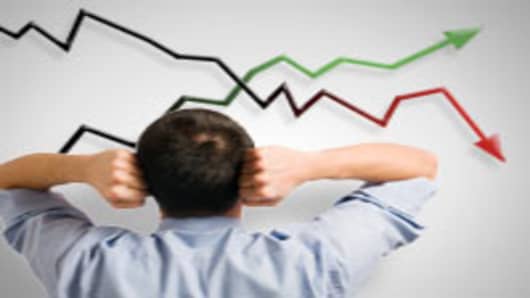Plunging yields and surging supply has triggered a scare in high-yield bonds, but bubble hunters may be looking in the wrong place.
Average yields in the junk market recently slipped below the pivotal 7 percent mark, while global issuance hit its highest July ever last month. With economic growth slowing, some pros are speculating that the aggressive run in high yield is about to end.
But those fears come as cash remains around record levels on corporate balance sheets, defaults remain low, and the stock marketcontinues to rally.
Still, the fears persist that the flock to junk, spurred by extremely low yields in government debt, is creating a bubble ready to pop.
"People wanted more yield than the United States Treasury was willing to give. So they went to other places to get it, and that's a risky situation," says Kevin Ferry, president of Cronus Futures Management in Chicago.
"My definition of a bubble is, when did you get out? If you sold at the high, then it was a bull market. If you're holding now and watching this stuff trade behind you..."
Indeed, Ferry and others suspect some of the froth could come off the junk market in the coming days. But that does not mean now is the time to start dumping high-yield. (Read More: Here's the Secret to Making Money in Stocks This Year)
Bespoke Investment Group examined the bubble fears — espoused in Barron's this week and elsewhere — and found that, historically speaking, high-yield is trading within a normal spread from comparable Treasury yields (explain this). A blowout in the spread would indicate a bubble, but that's not happening, with the gap about 5.89 percentage points, the market research firm said.
"When the spread is wide, as it was in 2009, investors are avoiding risk, while low spreads imply that investors are more tolerant of risk," Bespoke said in a note to clients. "The question investors have to ask themselves is that with high yield bonds essentially trading at their average spread (price) going back to 1997, does that constitute a bubble?
In fact, government debt, with its surging yields, might be closer to bubble territory than junk bonds.
"Treasurys are stupid. Who would do that?" says Brian Tinnerino, senior trader for retail high-yield trading at Stifel Nicolaus in Baltimore. "More money has been lost in the Treasury market in the last six weeks than has been lost in the high-yield market."
Exchange-traded funds tracking junk bonds, however, have underperformed this year. The SPDR Barclays Capital High Yield Bond is up 3.7 percent year-to-date, while the iShares iBoxx $ High Yield Corporate Bond Fundhas returned 2.7 percent.
Tinnerino thinks now is the time for investors to find well-priced high-yielding corporates, particularly in the mining and metals, retail and some fuel sectors. It's a viewpoint shared by other fixed income experts.
"The key for us in being successful in the high-yield market isn't in buying the market as a whole but rather looking at situations that are out of favor," he says. "There are well-run companies in these spaces that are trading cheap to their peers, they are cheap to the market. This isn't a case of hitting them where they ain't, it's just taking the other side of the market."
Strategists at Bank of America Merrill Lynch recently put out recommendations similar to Tinnerino's, advocating cyclical sectors including coal miners, steel producers and machinery and staying away from defensive sectors such as consumer staples, food retail, health care and electric utilities.
Moreover, the firm noted that the rise in Treasury yieldsis pointing toward stronger appetite for risk, meaning that high-rated corporate bonds, which offer protection against default but are vulnerable to rate increases, might not be as safe as they appear. Rising interest rates, as harbingers of inflation, eat into fixed income investments, particularly in higher quality instruments.
"The highest rated 'flight-to-quality' corporate bonds are not so safe after all, as they have the most interest rate risk and the least amount of credit risk," BofA credit strategist Hans Mikkelsen said in a note to clients. "Thus when interest rates rise further, which they will eventually, we think that these bonds stand to produce the worst returns as the reduction in credit risk provides relatively little offset."
Cronus's Ferry adds that the investors who are betting on a junk bubble must reason that "then the stock market is a bubble."
Even banking analyst Dick Bove at Rochdale Securities echoed the theme, saying the drop in junk yields shows that "investors feel a need to get a higher return on their cash hoards. Simply seeking safety in Treasury securities is not meeting the need of investors."
Global issuance for high-yield bonds hit $24.6 billion in July 2012, a staggering rise of 88 percent over June and the biggest July on record, according to Dealogic. Yet issuance for the year, at $210.5 billion, is 19 percent below the same period in 2011, suggesting that the risky rally in fixed income could continue, and spread elsewhere.
"It is a short step from there into common stocks," Bove said. "In the case of banks, if investors choose to look, profits are very high and valuations are very low."



